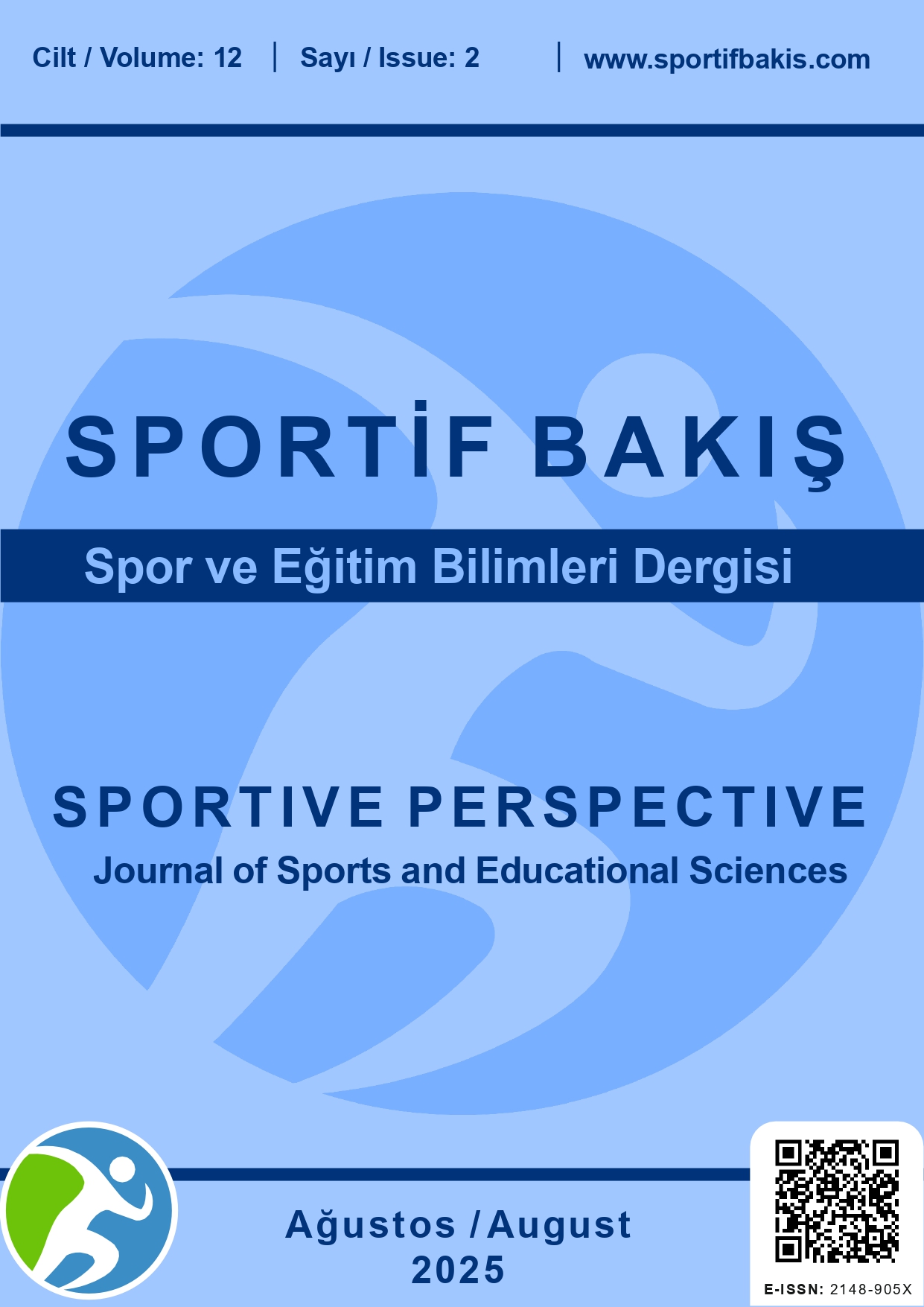Pole Dance Studios Marketing Approach: A Document Analiys
DOI:
https://doi.org/10.70736/spjses.296Keywords:
Document analysis, marketing communication, pole dance, web siteAbstract
Initially perceived as an activity associated with sexuality, pole dance has increasingly been redefined as a form of art, sport, and fitness. However, due to its historical roots and cultural connotations, it continues to face societal prejudices in many contexts. In this transformation process, websites play a crucial role by contributing to the social positioning of pole dance and serving as an effective tool for promoting relevant businesses. The aim of this study is to examine how pole dance is positioned by pole dance studios, what meanings are attributed to it, and how it is presented to potential consumers. A document analysis-based research design was employed. In this context, the websites of studios offering pole dance training in Turkey were analyzed. Relevant websites were identified through a Google search using the keyword “pole dance” in April 2024. Data collection was conducted through document analysis, and a total of twelve studio websites were examined using content analysis. The analysis revealed three main themes: product awareness and promotion, the role and positioning of the service, and the dynamics of service delivery. Accordingly, it can be stated that various marketing communication efforts are employed on the websites of pole dance studios. The pole dance service sector can be considered a developing activity type within Turkey. Studios are increasingly working to redefine and reposition this activity—initially perceived as obscene and sexually charged—as a form of artistic expression, sport, and fitness, aiming to appeal to a broader audience. The findings contribute to the literature by highlighting the role of websites as communication tools in the rebranding and repositioning of a product with a previously negative image.
References
Allen, K. L. (2011). Poles apart? Women negotiating feminity and feminism in the fitness pole dancing class. Tese (Doutorado em Filosofia). University of Nottingham, Nottingham.
Altunışık, R., Özdemir, Ş. & Torlak, Ö. (2016). Pazarlama ilkeleri ve yönetimi (2. Baskı). Beta.
Alves, L. A. & Nóbrega, A. N. A. (2021). “But that’s because people don’t know what pole dancing is”: Contributions of evaluation to the discursive analysis of stigmas. Trabalhos em Linguística Aplicada, 59, 2183-2208. https://doi.org/10.1590/01031813829311620201106
Bowen, G. A. (2009). Document analysis as a qualitative research method. Qualitative research Journal, 9(2), 27-40. https://doi.org/10.3316/QRJ0902027
Clow, K. E. & Baacki D. E. (2018). Advertising and promotion: An integrated marketing communications perspective (7. Ed). Prentice Hall.
Çelikkaya, T. (2010). Sosyal bilgiler öğretmen adaylarının kullandıkları öğrenme stratejileri. Ahi Evran Üniversitesi Kırşehir Eğitim Fakültesi Dergisi, 11(3), 65-84.
Dale, J. P. (2013). The future of pole dance. Australasian Journal of Popular Culture, 2(3), 381-396. https://doi.org/10.1386/ajpc.2.3.381_1
Eskiler, E. & Altunışık, R. (2021). The moderating effect of involvement in the relationship between customer behavioral intentions and its antecedents. Sage Open, 11(2), 1-12. https://doi.org/10.1177/2158244021101449
Griffiths, K. (2015). Femininity, feminism and recreational pole dancing. Routledge.
Hanna, J. L. (2010). Dance and sexuality: Many moves. Journal of Sex Research, 47(2-3), 212-241. http://dx.doi.org/10.1080/00224491003599744
Holland, S. (2010). Pole dancing, empowerment and embodiment. Springer.
Horner, S. & Swarbrooke, J. (2005). Leisure marketing a global perspective. Elsevier.
Just, S. N. & Muhr, S. L. (2020). Holding on to both ends of a pole: Empowering feminine sexuality and reclaiming feminist emancipation. Gender, Work & Organization, 27(1), 6-23. https://doi.org/10.1111/gwao.12339
Kim, Y. & Kwon, S. Y. (2019). “I’m a poler, and proud of it”: South Korean women’s managed experiences in a stigmatized serious leisure activity. Social Sciences, 8(07), 199. http://dx.doi.org/10.3390/socsci8070199
Koç, E. (2011). Tüketici davranışı ve pazarlama stratejileri global ve yerel yaklaşım (3. Baskı). Seçkin.
Kotler, P., & Keller, K. (2011). Marketing management (14nd ed.). Prentice Hall.
Labuschagne, A. (2003). Qualitative research- Airy fairy or fundamental?, The Qualitative Report, 8(1), 100-103. https://doi.org/10.46743/2160-3715/2003.1901
Leibenstein, H. (1950). Bandwagon, snob, and Veblen effects in the theory of consumers’ demand. The Quarterly Journal of Economics, 64(2), 183-207. https://doi.org/10.2307/1882692
Nart, S. (2015). Günümüz ekonomilerinde hizmetlerin rolü ve önemi. Altunışık, R. (Ed.) Hizmet pazarlaması ve stratejileri (1. Baskı). Beta Yayınevi.
Oxtoby, K. (2022). Why I.....pole dance. BMJ, 378. https://doi.org/10.1136/bmj.o1816
Pfeiffer, J. L., Sowitzki, S. K., Schäfer, T. & Euteneuer, F. (2023). Effects of pole dance on mental wellbeing and the sexual self-concept a pilot randomized-controlled trial. BMC Psychology, 11(1), 274. https://doi.org/10.1186/s40359-023-01322-z
Ries, A. & Trout, J. (2001). The marketing classic positioning: How to be seen and heard in the overcrowded marketplace?. McGraw-Hill.
Robinson, B. A. (2019). A black feminist approach to recreational pole dancing. UC Santa Barbara: Undergraduate Research and Creative Activities Journal. https://escholarship.org/uc/item/96r5r761
Rubcic, L. K. (2013). The Branding of MissFit: Using market research to strategically brand a pole dancing fitness company in a way that helps reshape the public's perception of pole dancing. A Senior Project presented to The Faculty of the Journalism Department California Polytechnic State University, San Luis Obispo.
Sak, R., Şahin Sak, İ. T., Öneren Şendil, Ç., & Nas, E. (2021). Bir araştırma yöntemi olarak doküman analizi. Kocaeli Üniversitesi Eğitim Dergisi, 4(1), 227-250. http://doi.org/10.33400/kuje.843306
Santos, R. O. (2018). Pole Dance: Dança ou esporte? Bachelor's thesis, Universidade Federal do Rio Grande do Norte, Brazil.
Smith, A. C. T. (2008). Introduction to sport marketing. Elsevier Butterworth-Heinemann Publications.
Sousa, J., & Oliveira, L. T. (2023). Pole dance: More than sport. An insight in portuguese reality. Retos, 47, 1046-1054. http://dx.doi.org/10.47197/retos.v47.96021
Tiryaki, S. (2014). Kadın sporcu fotoğraflarıyla bedenin pazarla(n)ması. Selçuk İletişim, 8(2), 218-237. https://doi.org/10.18094/si.88297
Trout, J. & Ries, A. (1972). The positioning era cometh. Reprint of a Three-Part Series in Advertising Age, Crain Publication.
Whitehead, K. & Kurz, T. (2009). Empowerment and the pole: A discursive investigation of the reinvention of pole dancing as a recreational activity. Feminism & Psychology, 19(2), 224-244. http://doi.org/10.1177/0959353509102218
Zhou, L., Chlebosz, K., Tower, J. & Morris, T. (2020). An exploratory study of motives for participation in extreme sports and physical activity. Journal of Leisure Research, 51(1), 56-76. https://doi.org/10.1080/00222216.2019.1627175
Downloads
Published
How to Cite
Issue
Section
License
Copyright (c) 2025 Sportif Bakış: Spor ve Eğitim Bilimleri Dergisi

This work is licensed under a Creative Commons Attribution 4.0 International License.



